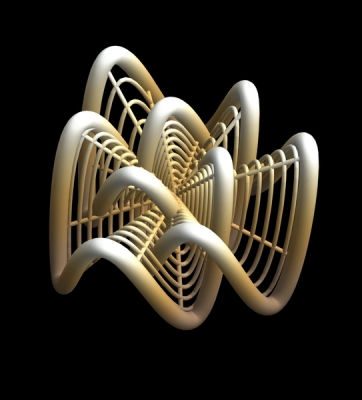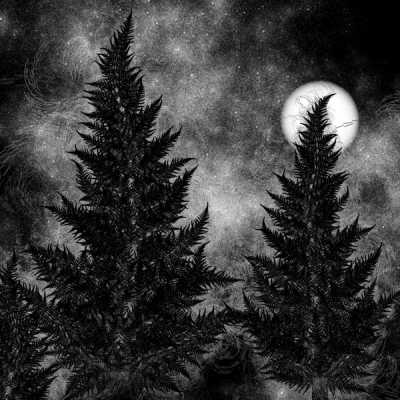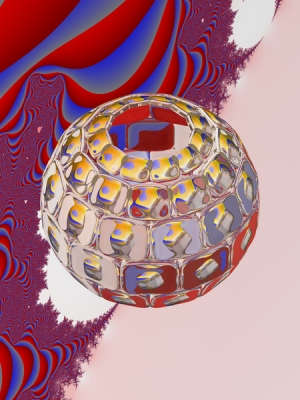| Mathematical Art 2013 |
| Written by David Conrad | |||
| Friday, 03 May 2013 | |||
|
Mathematical art is not a contradiction in terms. There is beauty in symbols and the forms that they describe. Every year the American Mathematical Society (AMS) organizes an online art show. This year's has just been posted and it's worth a look. You can view the images as a slide show or simple browse the thumbnails. Most, but far from all, of the works are software generated. The tools vary from Mathematica to 3D printers. Indeed Borromean Links Cage uses both:
"Borromean links cage," by Roger Bagula (Lakeside, CA)
Context Free Art language is a language that allows the construction of context free grammar for creating images. Any image produced in the grammar is a valid sentence in the grammar. Add a little randomness and you have generative art. Starry Pines is an example of creating a grammar for tree shapes added t a background of star fields.
"Starry Pines," by Charles Redmond (Mercyhurst University, Erie, PA) The emphasis of most of the works is on representing mathematical concepts or objects rather than on the techniques used to create the works. However Mandelbrot's Chandelier admits to using ray tracing and to solving over a billion quartic equations.
"Mandelbrot's Chandelier," by Jeffrey Stewart Ely (Lewis and Clark College, Portland, OR) There are lots more to see at the website and in higher resolution then the examples above. There are some for Escher fans and a lot for the geometers. What surprises me is that although there is an example of 3D printing the artwork generally takes the form of prints or sculpture - be sure to see the Super Buckyball. It would be nice to see some animated gifs, Cliplets or perhaps even interactive web or phone apps. I suppose it's a matter of how far to go. More Information2013 Mathematical Art Exhibition Related ArticlesAlmost Still Photos - Free Cliplet App From MS Research Face Recognition Applied to Portraits
To be informed about new articles on I Programmer, sign up for our weekly newsletter, subscribe to the RSS feed and follow us on Twitter, Facebook or Linkedin.
Comments
or email your comment to: comments@i-programmer.info
|
|||
| Last Updated ( Sunday, 02 June 2019 ) |




